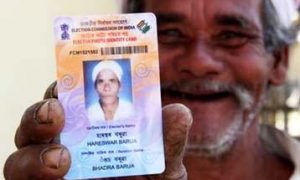Holi 2024: Holi is one of the biggest Hindu festivals that celebrates the victory of good over evil. From date to history, here is all you need to know.
Holi, the festival of colours, is just around the corner and we can’t wait to celebrate this vibrant festival with family and friends. One of the biggest festivals in India after Diwali, it is celebrated with great fanfare by Hindus around the world. Two days are devoted to the festivities, with Dhulandi or Rangwali Holi coming after Choti Holi or Holika Dahan. It marks the victory of good over evil. It takes place in the Hindu month of Phalgun, which falls between February and March. People celebrate the day with balloons, flowers, water and colours. Adults and children apply gulal to each other and ask their elders for blessings. From history to significance, scroll down to know more.
Read More: Holi 2024 skincare: Beauty tips on pre and post care routine to protect your skin
Holi 2024 Date: When is Holi and its shubh muhurat?
This year, Holi falls on Monday, March 25, and Holika Dahan falls on March 24. According to Drik Panchang, the auspicious timings are as follows:
Purnima Tithi Begins – 09:54 AM on March 24, 2024
Purnima Tithi Ends – 12:29 PM on March 25, 2024
Read More: Garam Pani For Weight Loss: How Simple Hot Water On Empty Stomach Helps To Burn Calories Faster?
Holi 2024 History and Significance
Holi is a festival celebrating the triumph of good over evil and the heavenly love shared by Lord Krishna and Radha. It is also celebrated as a harvest festival to honour the arrival of spring and the end of winter. According to Hindu mythology, Radha was extremely fair and Lord Krishna had a dark complexion. Because of their different skin tones, Krishna often worried about whether Radha would accept him and complained to his mother Yashoda. Yashoda once jokingly suggested that Krishna paint Radha’s face a different colour to hide any differences. Krishna did as his mother advised and used gulal to smear Radha’s face. And that’s how the celebration of Holi began.
Another legend associated with Holi tells the story of King Hiranyakashipu, his son Prahalad, who was a follower of Lord Vishnu, and his aunt Holika, the demon. According to Indian mythology, Hiranyakashipu was given a boon that prevented both humans and animals from killing him. So he made them worship him. But Hiranyakashipu asked his sister Holika to have his son killed by sitting on a funeral pyre and covering himself with a garment to protect himself from the flames after the boy became a follower of Lord Vishnu and refused to worship him. But to protect him, Prahlad prayed to Lord Vishnu, who responded by sending a gust of wind that carried the cloth from Holika to him. Holika Dahan is therefore celebrated the day before Holi to commemorate the triumph of good over evil.
Holi 2024 Celebrations:
The Braj regions, which include Mathura, Vrindavan, Gowardhan, Gokul, Nandagaon and Barsana, are associated with Lord Krishna and are the sites of a grand celebration of the festival of Holi. World famous Holi celebrations include Phoolwali Holi in Vrindavan and Lathmar Holi, a customary Holi celebration in Barsana. The festival is observed over two days, namely Rangwali Holi, also known as Dhulandi, and Chhoti Holi, also known as Holika Dahan. On Holika Dahan, people light bonfires to symbolise the triumph of good over evil. They get up early the next day to play with colours or gulal. Children play with their friends by putting water in balloons and toy guns. Sweets and thandai made especially for the festival are also enjoyed by the public.





































